Extra News Alerts
Get breaking updates as they happen.
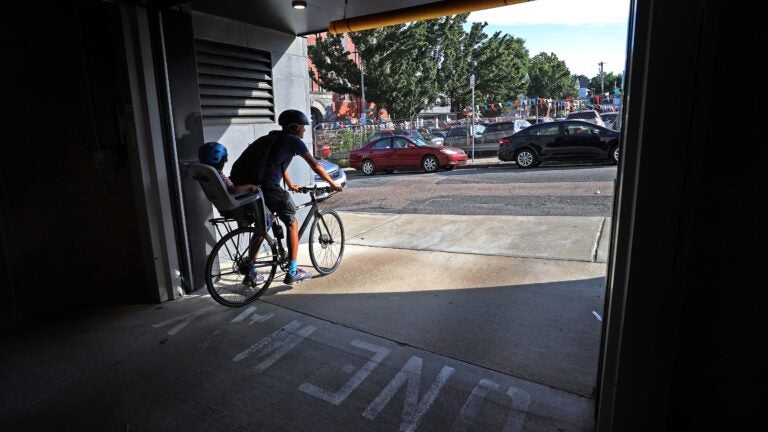
Not long ago, riding a bike down a stretch of South Huntington Avenue in Jamaica Plain was only for the brave. Navigating the sliver of pavement between cars whizzing by on their left and drivers opening their doors on their right, bikers did their best to avoid getting run over or “doored.”
Now, riders can cruise next to the curb on the right side, protected by a row of parked cars from the hazards of the narrowed lane left for drivers.
This stretch of road from Centre Street to Heath Street has recently joined a growing number of miles of Boston streets with bike lanes meant to protect bicyclists, slow down drivers, reduce the risk of crashes, and ultimately get more people to feel comfortable biking. The theory — bolstered by studies and experiences from similar cities — is that if there is a safe path for biking, more people will take it, in turn reducing climate change-causing emissions, traffic deaths, and mind-numbing congestion.
There’s reason to believe it’s starting to work in Boston, with the city aiming to expand the bike lane network so that half of residents live within a 3-minute walk of a safe and connected bike route by the end of next year.
The city monitors how many people are biking by counting the number of bikes and cars at dozens of locations over a few days four times per year. The Globe analyzed the most recent data available from the fall counts at three of those locations where the city or state has added bike lanes. On the Boston side of the Mass Ave. bridge, where the state added bike lanes in 2021, the city has tallied a significant increase in the daily average number of bikes in the fall.
At two areas where the city has more recently added bike lanes, the average daily counts for the fall slightly increased.
Bikers interviewed by the Globe said new bike lanes across the city have made them feel safer and even allowed some to opt for biking instead of driving to work, day care, the grocery store, and to run other errands or visit friends.
But, challenges remain. Many projects face vocal opposition to ceding valuable street real estate to bikes. And other issues, such as the prevalence of large trucks, and lingering gaps in the bike network, make biking more dangerous than most would like. Take South Huntington Avenue — the safe 0.7 mile stretch gives way on either end to busy, car-filled streets where bikes are forced back into traffic.
When Srikanth Sundaresan moved from California about two years ago, he immediately started traveling by bike around Greater Boston. But it wasn’t until about a year ago, once he was familiar with the bike lanes, that he decided to use his bike to take his 2-year-old to day care on his way to work.
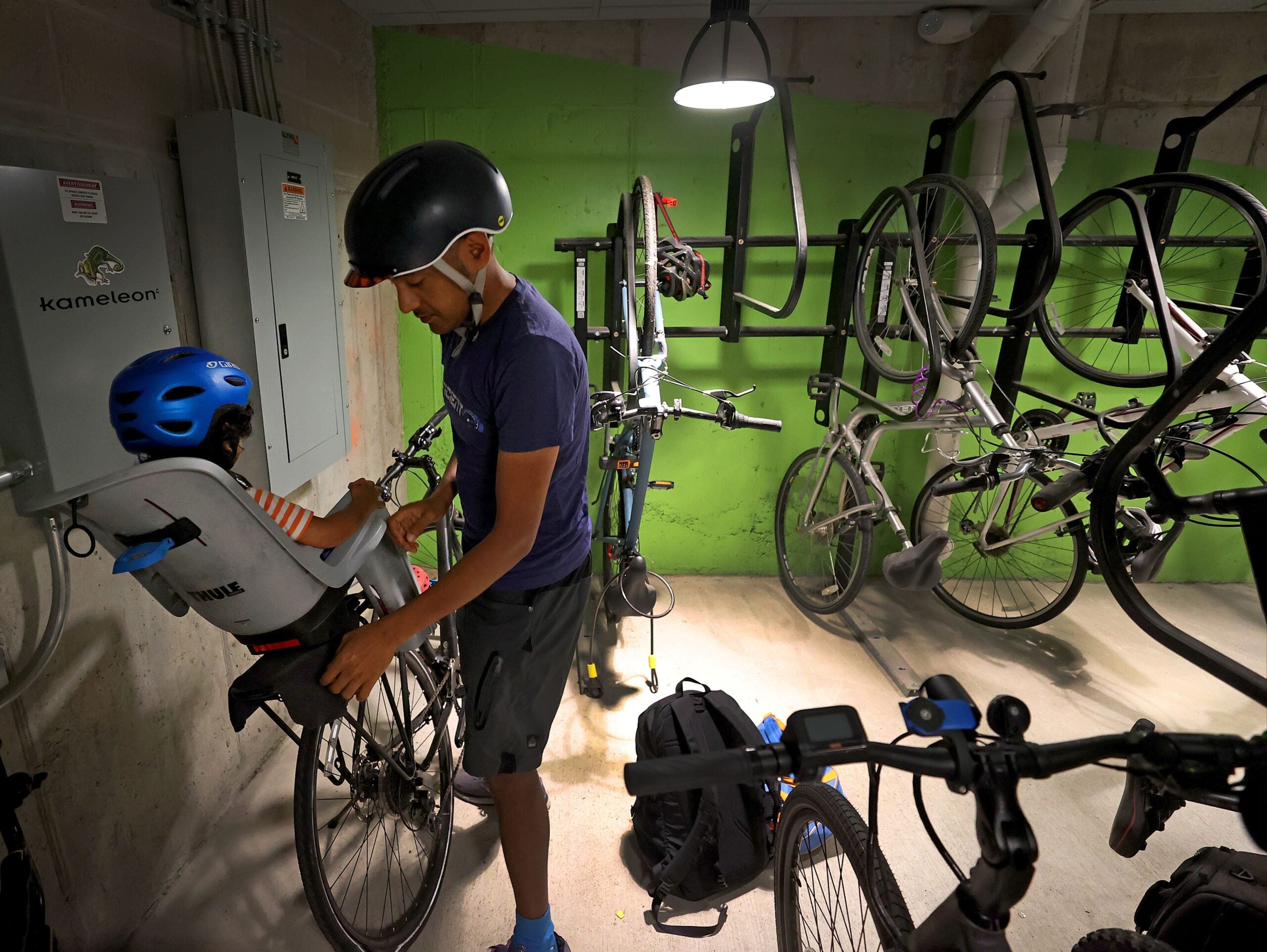
Now, Sundaresan, 41, straps his son into the seat above his back wheel and pedals down Boylston Street in Jamaica Plain from his home in Egleston Square to the Emerald Necklace. From there, it’s a patchwork of riding in the street with car traffic and on bike lanes to his son’s day care in Brookline, onward to his office in Kendall Square, then back to day care and home in the evening.
The new lanes, especially one on Boylston, he said, “make a huge difference.”
“You can stop thinking about the traffic,” he said. “I can actually enjoy the ride.”
There is an area of his commute, however, that is under construction near Kenmore, forcing him to share a lane with large trucks.
“That section I don’t do with my child,” he said. “If that section was before my drop off or after my pick up, I wouldn’t do this. It feels super unsafe.”
Nearby, in West Roxbury, Rich Esposto, 34, began to make the one-mile trek between his home and his 3-year-old’s day care by bike about one year ago. The main draw: convenience.
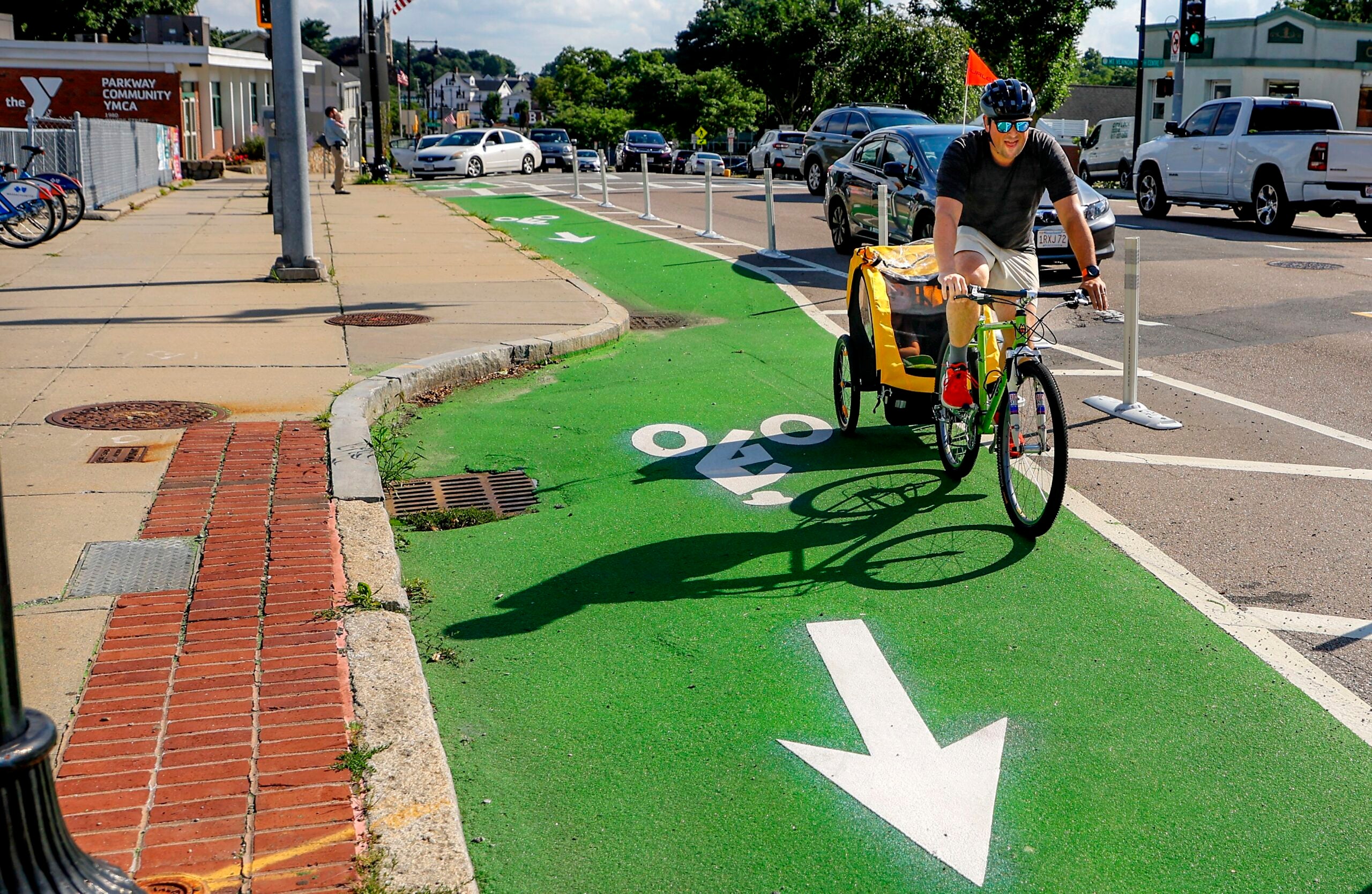
“It’s a lot easier to put her in the bike trailer than it is driving,” he said. “We still do it by car predominantly, but we do it by bike when we can. We’re conscious of trying to reduce those trips when it’s such a short distance.”
The new bike lanes on Centre Street, installed by the city last year, make the day care trips feel “much safer,” Esposto said.
Infrequent and slow MBTA service is what nudged Holly Eisenberg, 26, to begin traveling almost exclusively by bike about one and a half years ago. She commutes from her home in Back Bay to her office downtown, some of the way through newly-added bike lanes, and uses her bike to visit friends around Greater Boston.
“You can get from point A to point B in max 40 minutes; that’s a great feature of Boston,” she said. “The traffic here is horrible, doing whatever you can do to avoid it helps everyone.”
Cars and delivery scooters are Eisenberg’s top concern. A driver opened a door into her on a street in Roxbury that did not have bike lanes in 2021, sending her flying. She said she would like to see more traffic lights with signals for bikes and protected turns for bike riders, among other improvements.
“I was lucky, I had a metal basket in the front of my bike that almost acted like an airbag. It got smushed,” she said.
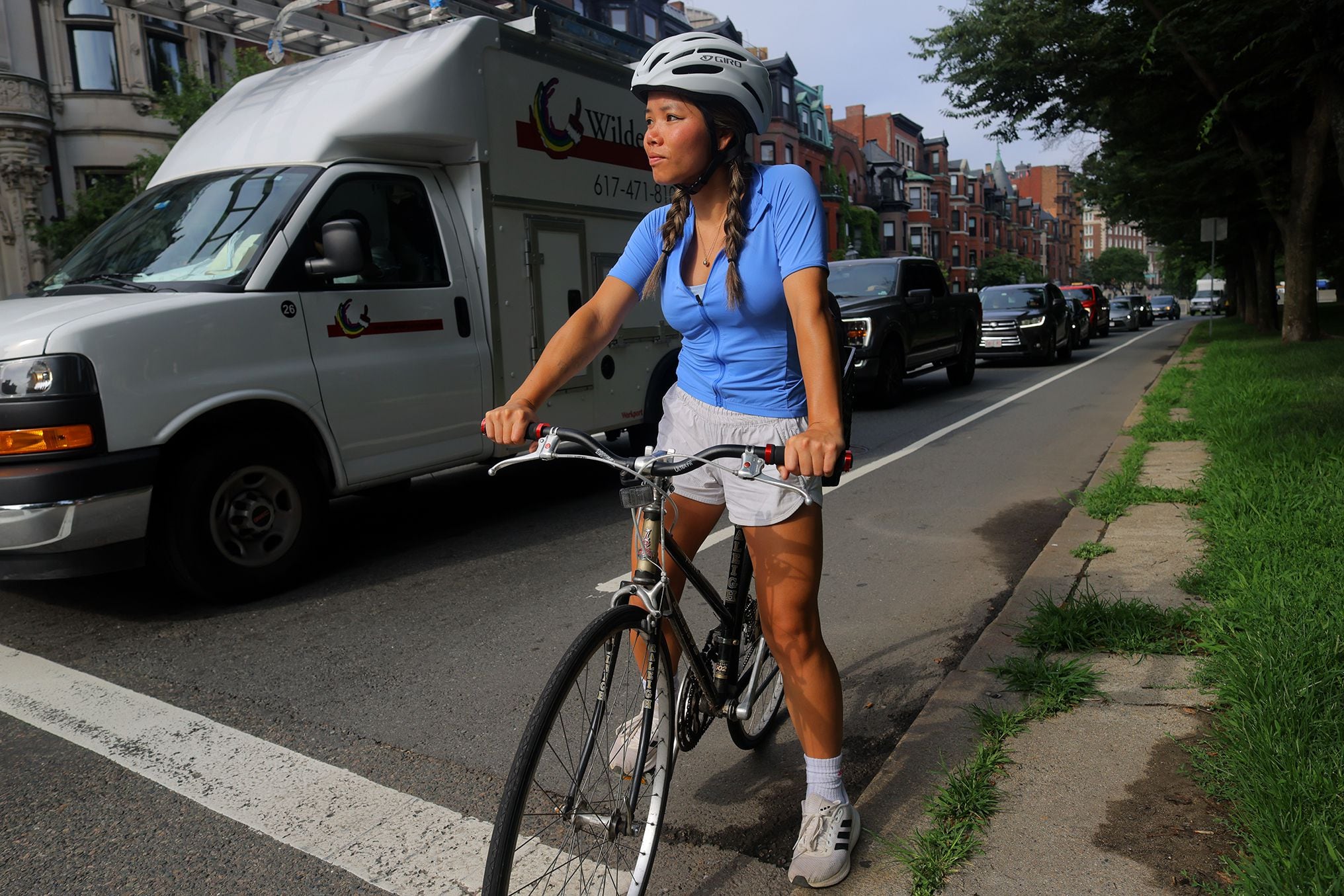
At the three locations with new bike lanes analyzed by the Globe, the results show varying degrees of progress.
Since MassDOT installed bike lanes on the Mass Ave. bridge in 2021, the average number of bikes counted by the city on the Boston side over a few days in the fall has increased each year. Last year, the city counted a daily average of 6,160 bikes there, a 51 percent increase since 2021.
On South Huntington Avenue in Jamaica Plain, where the city added bike lanes in 2023, the average number of daily bikes counted in the fall increased slightly from the previous year, from 228 to 301. This is still below the record high reached for this location in 2017, when the average number of daily bikes counted in the fall was 369.
On Cambridge Street in Allston, where the city added bike lanes between Harvard Avenue and Soldiers Field Road in summer 2022, the average number of bikes counted that fall increased by 12 percent to 414, then dipped slightly the following year.
Another telling metric on Boston’s bike culture: The number of trips on Bluebikes, Greater Boston’s bike share system, has steadily increased since it started in 2011, with a spike in 2022 to nearly 3.8 million trips, largely attributed to the Orange Line shutdown.
Sundaresan, Esposto, and Eisenberg were all experienced bikers before they started doing day care shuttling and commuting by bike. It’s going to take a lot more bike lanes to get those still on the sidelines to join them, said Vivian Ortiz, a transportation advocate in Mattapan who is Boston’s first bicycle “mayor”, a cycling ambassador of sorts named by the Amsterdam-based biking advocacy group BYCS.
“People say they want to ride to work, but they don’t want to ride on the street,” she said.
Ortiz, 61, knows firsthand what a difference a protected lane can make. When the city installed temporary bike lanes on Cummins Highway in Mattapan, one of the most crash-prone streets in the city, in 2020, Ortiz said, she cried with happiness when she tried them out.
“That was the first time I had ever ridden on Cummins Highway and felt safe,” she said.
Connectivity is top of mind for Boston’s chief of streets, Jascha Franklin-Hodge, who uses an electric bike to transport his kids. Building a connected bicycle network will take time, he said, but the progress is encouraging.
“When I look at a map, and I see these gaps . . . I see future projects, I see the puzzle pieces that we are stitching together year by year,” he said.
The enthusiasm for biking is there, nationwide and in Boston, according to a report last year from StreetLight Data, a transportation analytics company. StreetLight found that the average daily number of bike trips per 1,000 people in the Boston metro area grew from 26 in 2019 to 35 in 2022.
The way to keep up the momentum: more bike lanes. Last year, the city said it built around nine miles of these lanes, on par with its goal. More are planned for construction this year and next, including in Allston-Brighton, Back Bay, Downtown, Jamaica Plain, Kenmore, and Mattapan, the city said, with more on the way, including extending the South Huntington Avenue lanes.
“All these projects are to slow down drivers and get some of these folks to realize that you can do some of these trips on a bus, walking, or on a bike,” said Ortiz, the bike mayor. “It’s getting people to think differently. That’s very hard to do.”
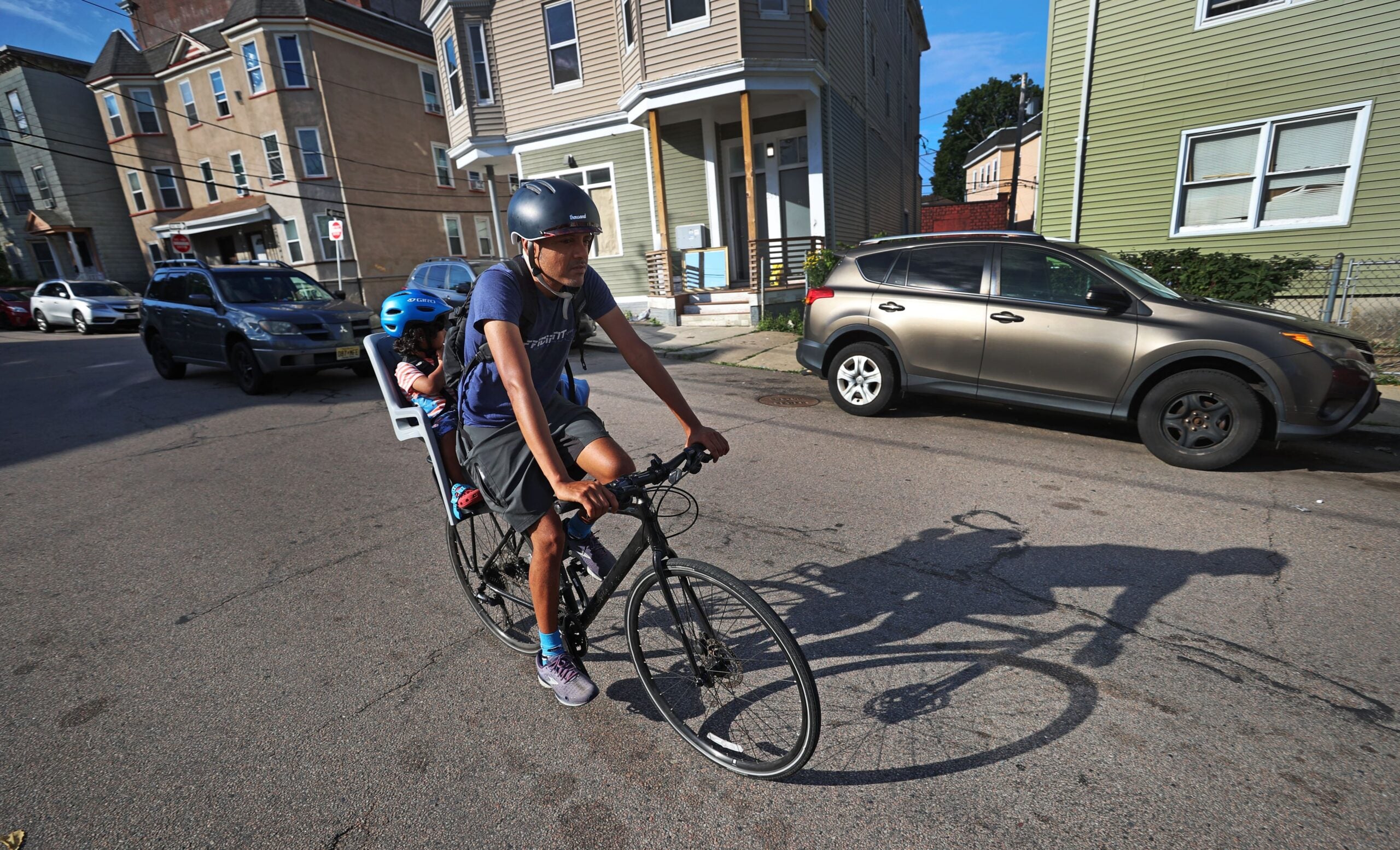
Get breaking updates as they happen.

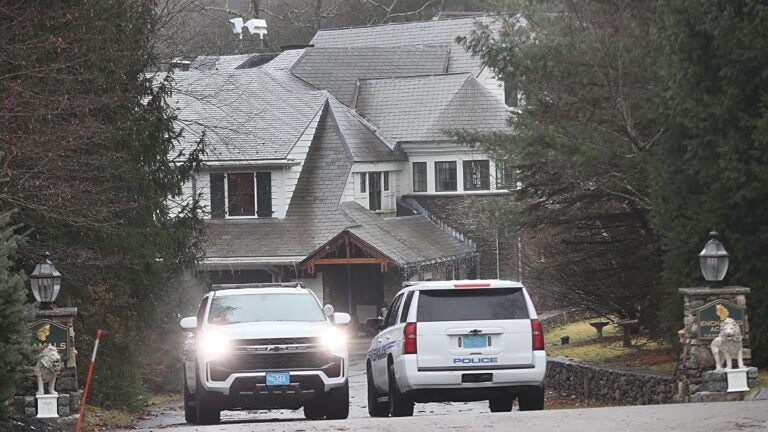
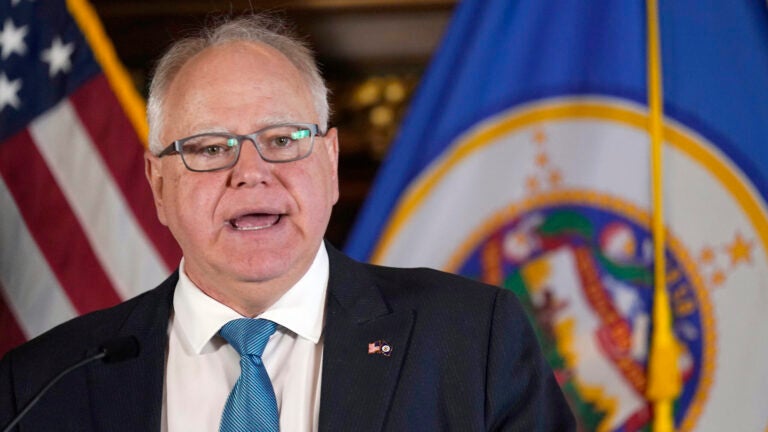
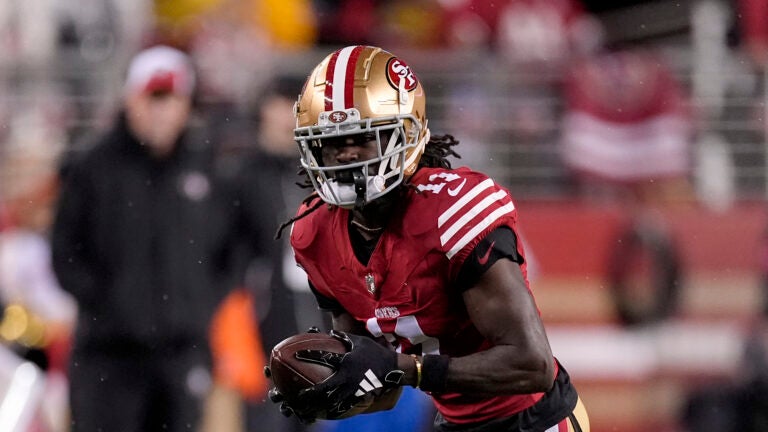
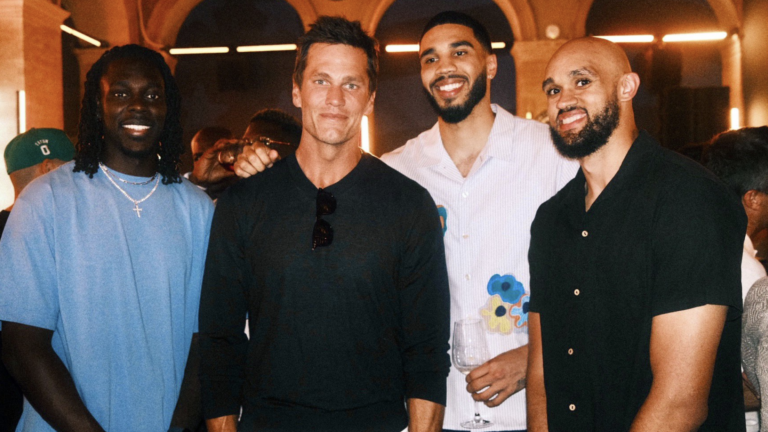
Stay up to date with everything Boston. Receive the latest news and breaking updates, straight from our newsroom to your inbox.
Be civil. Be kind.
Read our full community guidelines.